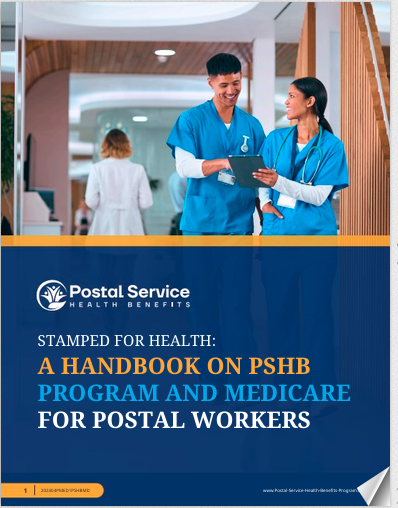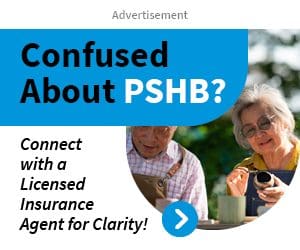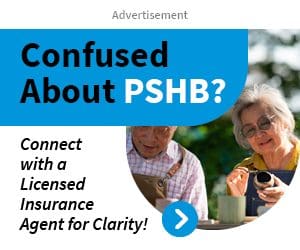Key Takeaways
-
You must be enrolled in a Postal Service Health Benefits (PSHB) plan starting in 2025 to maintain USPS-sponsored health coverage.
-
Several critical deadlines in 2024 and 2025 affect both active employees and annuitants, especially regarding Medicare Part B enrollment and prescription drug coverage.
Understanding What Changed in 2025
The Postal Service Health Benefits (PSHB) Program officially replaced the Federal Employees Health Benefits (FEHB) Program for USPS employees and retirees as of January 1, 2025. This transition means your health insurance coverage now falls under PSHB, with a few key differences—most notably, its required coordination with Medicare Part B for some enrollees.
The PSHB Program was established under the Postal Service Reform Act of 2022. The law requires all Medicare-eligible Postal retirees and family members to enroll in Medicare Part B to keep their PSHB coverage, with some exceptions.
Timeline: What You Should Have Done in 2024
While it’s now 2025, some of the key steps you needed to take occurred last year. Let’s review the 2024 deadlines to help you confirm whether you’re on track:
April 1 – September 30, 2024: Medicare Part B Special Enrollment Period (SEP)
-
If you were already enrolled in FEHB and Medicare Part A but hadn’t yet enrolled in Medicare Part B, you had this one-time SEP to do so without late enrollment penalties.
-
This applied to annuitants and family members who would be required to have Medicare Part B under the new PSHB rules.
November to December 2024: PSHB Open Season
-
The PSHB Open Season replaced the FEHB Open Season for Postal employees and retirees.
-
During this time, you could select a PSHB plan for 2025 or be auto-enrolled in a corresponding PSHB plan if you didn’t make a selection.
-
Changes you made during this window became effective January 1, 2025.
Key Milestones in 2025
With PSHB officially in place, the current year involves a mix of continued compliance and monitoring. Here’s what to stay focused on throughout 2025.
January 1, 2025: PSHB Coverage Begins
-
Your selected PSHB plan, or the one you were auto-enrolled into, became active.
-
If you’re Medicare-eligible and required to have Medicare Part B, your PSHB plan is now coordinating benefits with Medicare.
Ongoing in 2025: Keep Medicare Part B Active if Required
-
If you were required to enroll in Medicare Part B, you must maintain active enrollment.
-
Losing Part B means losing your prescription drug coverage and other cost-saving benefits under PSHB.
June 30 – July 31, 2025: Notification of Unused Supplemental Benefits
-
If your PSHB plan offers supplemental benefits (such as dental, vision, or wellness perks), you’ll receive a mid-year notification.
-
This personalized update outlines any unused benefits to encourage usage before the end of the year.
October 2025: Annual Notice of Change (ANOC)
-
You’ll receive this notice if you’re enrolled in a PSHB plan that integrates with Medicare.
-
It summarizes upcoming plan changes for 2026, including benefits, costs, and provider networks.
November to December 2025: PSHB Open Season
-
You’ll have another opportunity to review and change your PSHB plan.
-
This is particularly important if your medical needs have changed or if you received a significant update in your ANOC.
Medicare and PSHB: What You Need to Know
Coordination between PSHB and Medicare is one of the most important aspects of your 2025 coverage. Here’s how it works:
Mandatory Medicare Part B Enrollment
Most Postal retirees and their Medicare-eligible family members are required to enroll in Medicare Part B to keep PSHB coverage. However, there are exceptions:
-
If you retired on or before January 1, 2025
-
If you are an employee who was age 64 or older as of January 1, 2025
-
If you live abroad
-
If you receive care through Indian Health Services or the VA
Prescription Drug Integration with Medicare Part D
If you’re enrolled in Medicare, your PSHB plan includes an Employer Group Waiver Plan (EGWP):
-
Automatically provides Medicare Part D coverage
-
Includes a $2,000 cap on annual out-of-pocket drug costs
-
Covers insulin at a fixed cost of $35 per month
Opting Out Has Consequences
-
If you opt out of the Medicare Part D portion, you lose all prescription drug coverage through PSHB.
-
You will not be able to re-enroll in the EGWP during a future Open Season unless you qualify for a Special Enrollment Period.
Important Reminders for Active Employees
If you’re still working for USPS in 2025, there are a few considerations you should keep in mind:
-
You are not required to enroll in Medicare Part B until retirement, unless you fall into one of the exception categories.
-
If you plan to retire soon and will be Medicare-eligible, make sure to factor the Part B requirement into your retirement planning.
-
Continue to use LiteBlue to manage your PSHB selections and update personal information.
Tools and Resources to Stay on Track
You have several tools available to help manage your PSHB benefits:
-
LiteBlue: Active employees can view, change, and manage their health benefits.
-
KeepingPosted.org: Retirees can access resources, forms, and update their personal information.
-
PSHB Navigator Help Line: Call 1-833-712-7742 for questions related to eligibility, Medicare coordination, and plan choices.
-
OPM Website: Offers official plan brochures and comparison tools.
What to Watch for in Late 2025 and Beyond
Looking ahead, you’ll want to prepare for ongoing responsibilities and possible changes:
-
Late 2025: Carefully evaluate your PSHB plan’s performance, costs, and provider network ahead of Open Season.
-
2026 and Future Years: Expect annual updates to premiums, benefits, and Medicare integration. Stay proactive each fall during Open Season.
Staying Compliant and Covered in 2025
Successfully transitioning to PSHB in 2025 depends on meeting enrollment requirements and staying informed about your benefits. Whether you’re a current employee planning for retirement or a retiree adapting to Medicare integration, being proactive will help you maintain the coverage you need.
If you’re unsure about your Medicare Part B status, eligibility for exemptions, or PSHB enrollment choices, speak with a licensed agent listed on this website for professional guidance.







